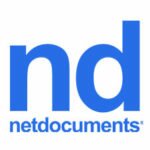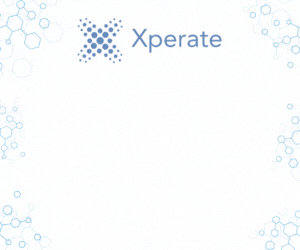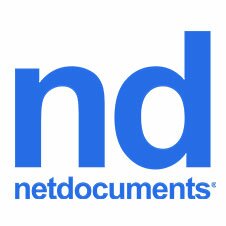NetDocuments case study: Cloud myths — Debunked!
Separating fact from fiction about cloud-based technologies
Introduction
Cloud computing — once a mere buzzword among the technology elite — has burgeoned into a worldwide paradigm shift for business. Even before COVID-19 drove companies “into the cloud,”:
- 78% of law firms were storing data in the cloud,
- 69% intended to adopt cloud solutions, and
- The percentage worried about cybersecurity dropped from 33% to 17%.
When COVID-19 hit in 2020, work-at-home mandates accelerated cloud adoption among law firms to accommodate a remote workforce. In fact, 65% of firms report their cloud philosophy is now “Mostly in the cloud” or “Cloud with every upgrade.”
Industry experts suggest law firms of all sizes view cloud adoption as an inevitability.3 While this may be the case, you may feel your firm is not ready to take the plunge.
Perhaps you’ve searched online for more information, only to be greeted by a tsunami of articles on the pros and cons of cloud computing. That’s why we’ve prepared this guide — to present you with the facts and debunk the myths of cloud computing.
Myth: The Cloud Is The Cloud — It’s All The Same
Fact: Cloud Models Differ
Cloud computing is an umbrella term for computer services provided over the internet — in the cloud. Cloud-based services allow firms to replace their inhouse servers and resources with third-party servers and support. All cloud providers are internet-based, but two vastly different models exist.
In the hosted cloud model, on-premises software providers modify their legacy systems to cloud-based servers, but the architecture of the software remains the same. This approach fails to leverage native cloud capabilities including instant upgrades and updates, immediate scalability and seamless integration with other applications, and still requires the company to spin up and maintain separate (virtual) servers, similar to an on-premises solution. Additionally, hosted systems tend to retain the technical issues inherent in their legacy counterparts. For this reason and others, tech support is also more complex.
In a cloud-native model, users benefit from architecture designed specifically for the cloud and its capabilities. Firms have faster organisation-wide access to the latest software versions including new or enhanced features and critical security updates. Pricing is clear-cut, predictable and typically based on an affordable, pay-per-use model rather than the fluctuating costs of hosted systems. Scalability — upward and downward — to meet ever-changing data storage needs is seamless.
NetDocuments, a cloud-first, cloud-only legal document management system developed expressly for the cloud, leverages all of the benefits of being cloud-native. For instance, when NetDocuments released ChatLink — a technology that connects security, governance, collaboration and document management in Microsoft Teams — this was able to be implemented to thousands of users simultaneously with no down-time or worries about compatibility or storage.
Myth: On-Premises Servers Keep Data More Secure Than In The Cloud
Fact: The Cloud Offers Greater Data Security Resources, Protocols And Expertise
Security is a foremost concern for all industries, but few more so than legal. Data breach coverage by the media creates the impression that inhouse data storage is more secure than the cloud. The fact is cloud providers generally have more security-focused resources, more stringent safety protocols and more overall expertise than typical law firms.
Regardless of the platform, however, 88% of all security breaches stem from employee mistakes. These errors include poor password hygiene, failure to apply security fixes in a timely fashion and poorly configured access controls or server settings. Ransomware, for example, typically seizes control of a system through phishing schemes or security holes from misconfigured systems and uninstalled software updates.5 Yet, despite increasing ransomware attacks in the legal sector, law firms are ill-equipped to deal with such threats.
- Only 43% use file encryption.
- Less than 40% use additional security tools such as email encryption, two-factor authentication and full-disk encryption.
Providers of robust cloud solutions protect firms from employee errors with:
- Additional user authentication measures,
- Multilayer encryption,
- Highly granular access controls,
- Data rollback options, and
- Expert guidance in configuring their systems for maximum security.
When dealing with a reputable solution provider, system-wide security updates are immediately applied. Matching the level of expertise and security in cloud solutions is difficult for most law firms.
For example, if you get hit with ransomware and echo files stored on your local hard drive are encrypted, NetDocuments can roll those files back to before they were encrypted.
Myth: Our Clients Don’t Want Us In The Cloud
Fact: Clients Have Already Moved To The Digital Age, And They Expect A Digital Experience From Your Firm
“The last best experience that anyone has anywhere, becomes the minimum expectation for the experience they want everywhere,” said IBM’s Bridget van Kranlingen a few years back, and it holds true now more than ever.
Though client concerns were once a considerable barrier to cloud adoption, industry studies suggest 96% of all businesses now use cloud services, whether they realise it or not. With clients relying on the experiences provided by cloud solutions, they reasonably expect their law firms to do the same.8 Security is still a concern, but clients have come to realise their law firms cannot provide the same degree of security as cloud providers.
Cloud-based computing also provides the opportunity to enhance client services. Rather than relying on email file transfers and confusing version tracking, cloud-based legal document management systems like NetDocuments provide streamlined collaboration with multiple layers of security and encryption. The result is boosted efficiency and productivity for your clients and your firm.
Myth: It Will Be Too Difficult To Switch
Fact: The Switch Depends On Your Provider’s Ability To Guide And Expedite The Process
To reap all possible benefits of moving to the cloud, it is important to choose the right solution provider and an experienced implementation partner to guide you. They will help ensure your data is transferred completely and expeditiously. Expert training and support can help people understand the why behind security protocols and get your people comfortable with any new processes to help with a smooth transition.
For document management, choose a legal-centric system built for the cloud. With NetDocuments, your firm can make the switch within a few weeks or months, depending on the number of files you have. And because NetDocuments works seamlessly in the background of your favourite software (Microsoft Office, Outlook, Gmail), you don’t have to worry about changing the way you work.
Myth: Smart Organisations Don’t Trust The Cloud
Fact: Financial Institutions, Government And Law Firms Trust And Use The Cloud
When cloud-based solutions emerged in the early 2000s, security concerns were top of mind across all industries. When Amazon entered the cloud space as a service provider (with Microsoft and Google following suit), the cloud became a legitimate alternative to onpremises systems.
Thanks to the bitter rivalry between these technology giants — as well as innovative tech startups — advancements in cloud computing infrastructure and functionality resulted in far greater security, robustness and lower customer costs.
Nowadays, we see 91% of financial institutions using cloud services, federal government expenditures of $6 billion per year on cloud computing, and 75% of law firms investing in cloud-based services.
Myth: Cloud-Based Software Solutions Cost Too Much
Fact: Cloud-Based Software Solutions Eliminate The Hidden (And Visible) Costs Of On-Premises Systems
At the risk of stating the obvious, on-premises software requires on-premises servers. Cloud-based solutions save your organisation physical space to be used for other benefits to the business.
Legacy software also comes with an outdated licensing model. Once you buy a certain number of software licenses, you’re stuck with them despite unforeseen changes in user demand. Cloud solutions are scalable, which can result in significant savings on unused licenses.
Software version upgrades and interim bug fixes can cause performance to lag, which can affect productivity. You will need IT resources to install these new versions and patches which, per best computing practices, should be tested first in an isolated environment. Additionally, in some instances, servers must be brought down for these tasks, causing a firmwide productivity crash.
By contrast, cloud systems require no on-premises servers. Cloud-based software solutions like NetDocuments charge per active user, so your firm won’t waste money on excess licenses. All users automatically access the latest version of the software with all bug fixes applied. You never have to bring down your system for software system upgrades.
Moving to the cloud requires intelligent strategy, planning and execution, but the pay off in reduced risks and long-term costs outweigh the effort exponentially. With a cloud-based service, your firm has the advantage of enhanced system security and 100% uptime. When a cloud server goes down, a backup server seamlessly takes its place. When your on-premises server goes down, operations stop, which can cost your firm thousands of dollars per minute in lost income, not to mention lost productivity.
Cloud systems reduce capital expenditures through the elimination of in-house equipment, software licensing and ongoing maintenance costs.
Myths No More
While mythology plays a role in preserving a culture’s heritage, it has no place in the high-stakes game of business automation. Don’t let cloud myths deprive you of the advantages available to your law firm: More secure, efficient, affordable document management.



